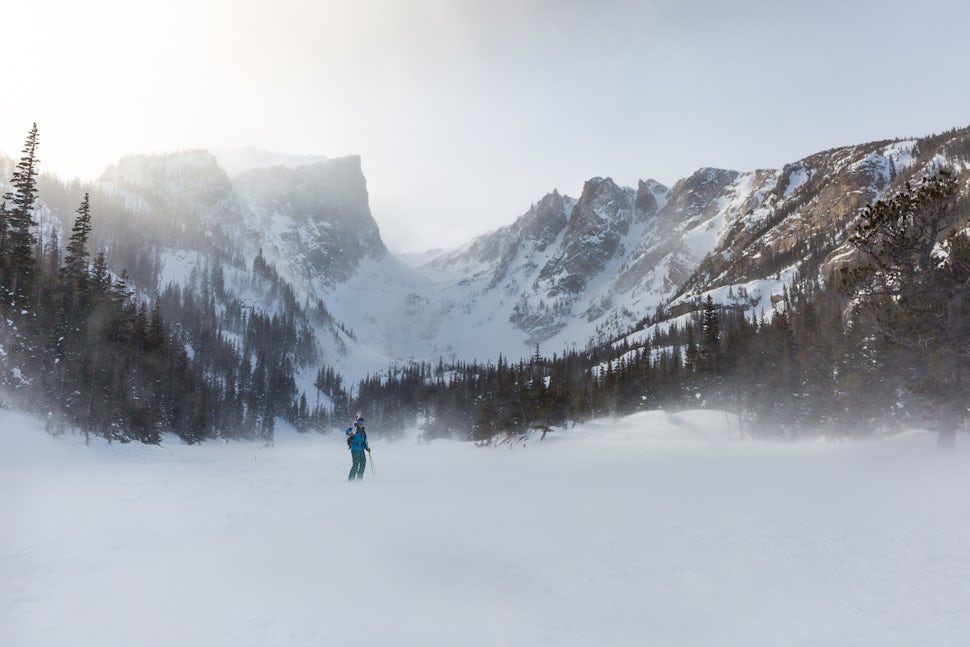The Toughest Kind of Photography Is in the Backcountry. Here's Why.
I’d define this genre as taking photographs in the wild places that you have travelled to by means of your own power (legs, bikes, and skis).

Trudging through rain, sleeping at high altitudes, losing feeling in your extremities, and developing beautiful calves.
If I could sum up backcountry photography in a sentence, that would be it.
If you were to google “types of photography” you’d soon be overwhelmed with a plethora genres from wedding to event to architecture. In all of these genres, photography is basically the same. Find a composition, adjust your settings, and click the shutter. However each category requires different abilities and mindsets. Personally, I believe that one of the hardest genres of photography to excel at and become proficient in is backcountry photography. I’d define this genre as taking photographs in the wild places that you have travelled to by means of your own power (legs, bikes, and skis).
Sitting by the fire after two days of backpacking
Fitness
The first and one of the most important factors that goes into photography in the backcountry is physical fitness. I’ve found that most photographers that come to me asking for advice on shooting in the field overlook the physical requirements that are necessary to perform well on a shoot. Whether you’re shooting skiers or bikepackers, you’ve got to be either as fit or more fit than the athletes. Now, I’m not claiming to be a fitness god by any means (I still eat a pint of ice cream a week) but you’ll prevent a lot of suffering if you’re in shape.
I constantly have to either hike further or skin ahead of my group to get the photographs that’ll tell the story that I’m attempting to share with the world. The best way to get in shape is to just get out in nature and do the activities you love. For example, I go trail running twice a week, practice yoga everyday, and go climbing in the gym whenever I can. This all goes a long way when you’re carrying an extra 10 - 20 LBS of gear while following your subject through sometimes shitty conditions.
Lucas Herbert trekking through high winds and blowing snow in Rocky Mountain National Park
Gear
Ah, gear. No matter how much you have, if you don’t know the in’s and out’s of it, it’ll do you no good. Understanding the camera body, when and when not to use certain lenses, and how to get the best results possible under tough conditions is absolutely crucial.
Depending on the shoot and the activity, I’ll bring anywhere from 10 to 20 pounds of camera gear. For backcountry skiing, my kit consists of a Canon 5D Mark III, 24-70 f/4 L, and a 17-40 f/4 L. However if it’s a deep day in the white room I’ll bring my 70-200 f/2.8 II L and leave the 24-70 at home. If I’m heading off on a backpacking trip, my 24-70 and 17-40 cover all the shots I’ll need. On top of that I’m bringing extra camera batteries, a goal zero solar charger, a filter or two, and my tripod. Now add all of that on top of the regular necessities for a backpacking or ski tour and you’ve got a bit of a heavier pack to carry. All of this is subject to everybody else's needs and preferences, so, take it with a grain of salt.
Lucas Herbert laying down a turn in Rocky Mountain National Park
Mentality
Without a healthy mind, any type of photography in the backcountry will be a bit tougher. There will be weather conditions that’ll chew you up and spit you out and gear failures that’ll ruin your day more than a few times. A solid way to strengthen your mentality is to practice yoga and meditate a few times a week. For some this may not work, but I’ve found it quite effective. Also, a healthy diet will strengthen the mind and body as well.
More than anything, despite all of the issues that may occur, the best thing you can do for yourself is to stay positive. Look at the situation as a glass half full rather than half empty.
A sunset descent in State Forest State Park
Drive
Drive. Drive is the single most important factor within backcountry photography. Heck, drive is the most important factor within any form of photography at all. If you don’t have the will to get up, get out, and shoot for hours to days at a time then it’ll be a lot harder to succeed. Without this drive, shooting will become boring and mundane. The art form that you once loved will become a pain and nobody wants that to happen. So if you want to pursue photography, be sure keep your stoke high.
The end of a dawn patrol.
You can check out my work at @wills_stills or my website.
We want to acknowledge and thank the past, present, and future generations of all Native Nations and Indigenous Peoples whose ancestral lands we travel, explore, and play on. Always practice Leave No Trace ethics on your adventures and follow local regulations. Please explore responsibly!
Do you love the outdoors?
Yep, us too. That's why we send you the best local adventures, stories, and expert advice, right to your inbox.












